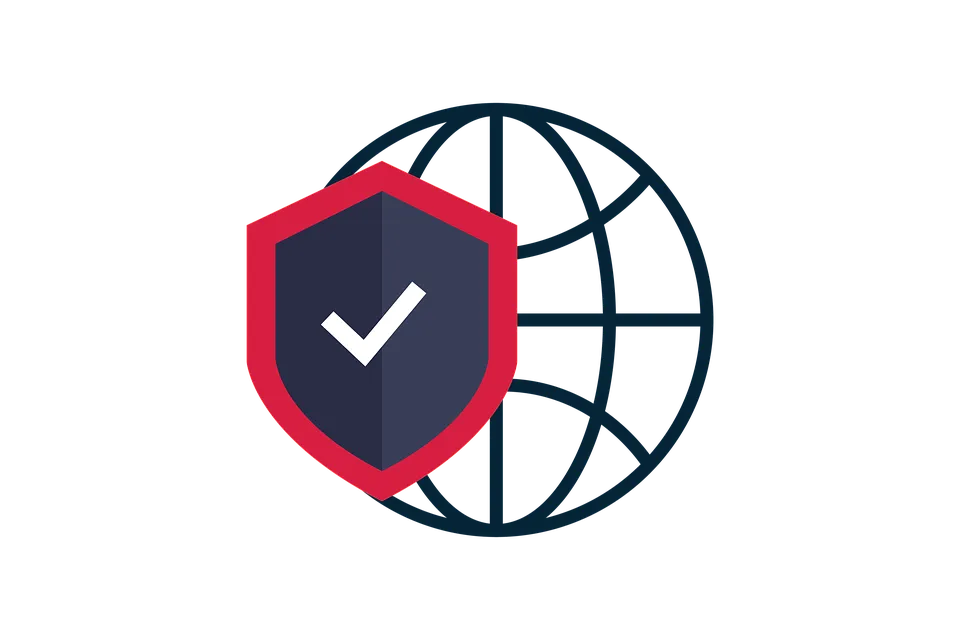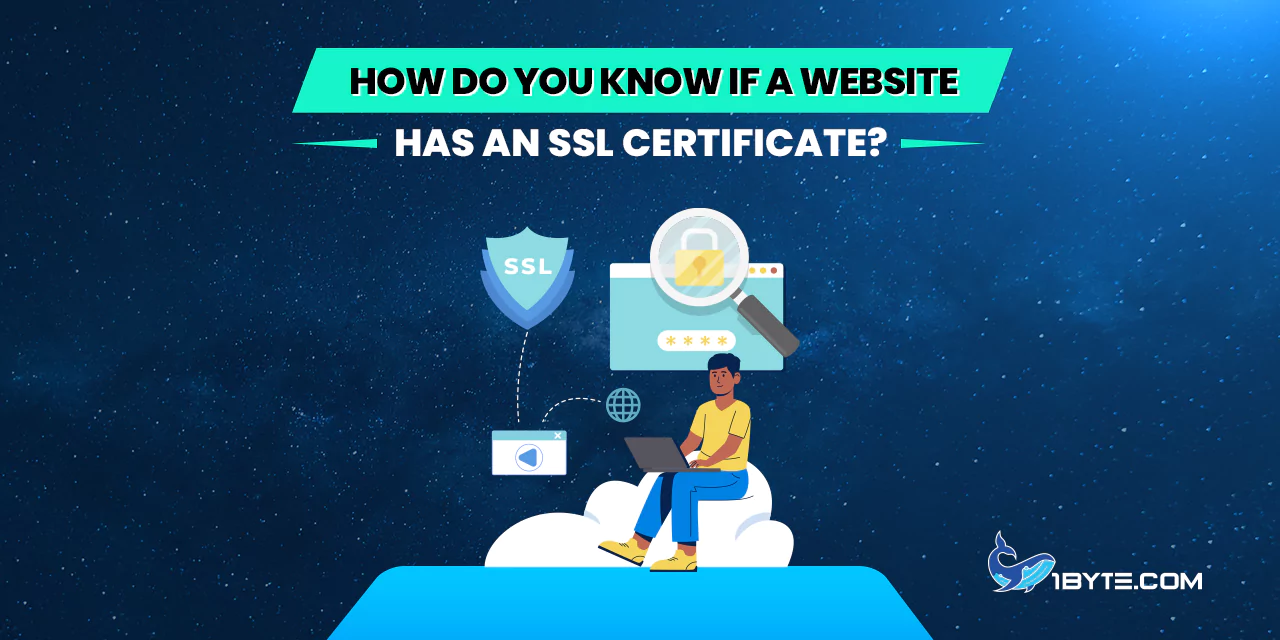Secure browsing is a hot topic in today’s digital world. The question, “How do you know if a website has an SSL certificate?” is one that many internet users are asking. SSL certificates are the backbone of secure internet connections, protecting sensitive data as it travels across the world’s computer networks.
Recent statistics show a significant increase in the adoption of SSL certificates by website owners. This surge is driven by growing awareness of data security and privacy. However, recognizing whether a website has an SSL certificate is not always straightforward.
This article from 1Byte aims to demystify the process. It provides clear, step-by-step instructions to help you identify if a website is SSL certified. We’ll delve into the specifics, backed by the latest reports and real-world examples. By the end of this read, you’ll be able to confidently answer the question: “How do you know if a website has an SSL certificate?”
Remember, knowledge is power. In the realm of internet security, being informed is your best defense. Let’s get started.
What is an SSL Certificate?
SSL certificate is an electronic document stored on the web site’s primary server. This certificate is the foundation of our safe Internet, safeguarding the data as it goes through the global computer networks. Not just a file, but a passport for data, that guarantees it will arrive safely.
SSL is an acronym that is short for Secure Sockets Layer. It is a standard that secures Internet connection and checks the authenticity of the server. All websites that have an HTTPS web address employ SSL. So, when you see “https://” it implies that the website has an SSL certificate installed.

The SSL certificate has certain specifications. It comprises the domain name for which the certificate was issued, the name of the individual or company to which it was issued and the CA that issued the certificate. It also has the date of issue of the certificate as well as the date of expiry of the certificate.
But how can one tell that a given website has an SSL certificate? It’s simple. You should find the padlock icon in the browser’s address bar. This small icon means that the web site has enabled the Secure Socket Layer encryption. To add more credibility, you can click on the padlock icon.
Secure Socket Layer certificates are important for businesses. They protect the user information, confirm the ownership of the website, protect the user from fake websites created by the attackers, and build the user trust. In other words, an SSL certificate is a website’s bodyguard, a safeguard of information, and a sign of credibility.
The benefits of SSL certificates for website owners and users
SSL certificates are one of the most important components of the modern world wide web. It has numerous advantages for the owners of websites and for the users of the Internet. So, let’s move to the details.
Protection of Sensitive Information
They are the fundamental of secure data transfer on the internet. They protect data like names, addresses, and credit card numbers during the time they are in transit between a browser and a server. This encryption ensures that the data cannot be understood by anyone apart from the intended recipient hence protecting it from cyber criminals.
Website and Company Authentication
SSL certificates are obtained from reliable third-party Certificate Authorities. These authorities authenticate the SSL applicant and therefore increase the level of security. It also assists the users to be very certain that they are dealing with the right site and not a fake one.
Increased Customer Trust
Users are confident in the sites that have SSL certificates. Thus, using such functions as advanced encryption and business identity proof, website owners can ensure their visitors a secure environment. Customers are able to view the certificate information and ascertain that the website belongs to a real company that is acting in the customers’ best interest.
Better Search Engine Rankings
Having an SSL certificate can also help a website to rank better on the search engine results page. Google and other search engines give preference to websites that have SSL certificates, and therefore such sites will be preferred in the search results.
Regulatory Compliance
SSL certificates assist website owners to meet the legal requirements that are set by the government. For example, the Payment Card Industry Data Security Standard (PCI DSS) mandates that websites that deal with credit card details must have an SSL certificate.
How to Know if a Website has an SSL Certificate?
When it comes to understanding “how do you know if a website has an SSL certificate?”, there are several key indicators to look for.

Firstly, the URL of the site should start with “https://”, not “http://”. The “s” in “https:” denotes ‘secure’, meaning that the website has SSL encryption.
Secondly, a padlock icon is usually shown in the address bar of the browser being used. This small icon means that the website has enabled the SSL encryption which makes your connection to the site secure.
To get more information about the security of a particular site, you can click on the padlock icon located close to the address bar. This action will give more details about the SSL certificate of the site.
It is also possible to use online tools that would help to check whether the SSL/TLS certificate was installed correctly on the website. These tools can give information on the certificate issuer, the date when the certificate expires and the certificate serial number in case of SSL problems.
How to view the SSL certificate details in different browsers
When you are wondering, “how do you know if a website has an SSL certificate?”, one of the quickest ways is to look at the SSL certificate information in your browser. This process is somewhat different depending on the browser you are using. Here’s a general guide for some of the most popular ones:
Google Chrome
- Visit any SSL-enabled website.
- In the URL bar, click on the padlock.
- Go to the Certificate section and click the “Valid” link.
- This will open the Certificate window where you can see details such as the subject, validity period, and the algorithms.
Firefox
- Visit an HTTPS website.
- The first step is to click on the Padlock Icon that is located in the address bar.
- You will get a dropdown where you can see the name of the CA that has provided the SSL certificate.
- Select the Arrow at the right side of the dropdown.
- You will get a popup where you can see details of the SSL certificate of the site.
Safari
- Visit an SSL-enabled website.
- Double click on the padlock in the address bar of the website.
- A window will open.
- After that, click on Show Certificate and then click on the Details to get the details of the certificate.
Currently, as of December 2023, the number of SSL certificates on the Internet is more than 292 million. This shows that many websites are using SSL certificates for security of their sites. However, it should be noted that not all SSL certificates are created equal in terms of the security that they provide. For instance, 94.3% of SSL certificates are Domain Validation, which provides the least amount of validation. Therefore, checking the SSL certificate details can provide valuable insights into the security of a website.
Leverage 1Byte’s strong cloud computing expertise to boost your business in a big way
1Byte provides complete domain registration services that include dedicated support staff, educated customer care, reasonable costs, as well as a domain price search tool.
Elevate your online security with 1Byte's SSL Service. Unparalleled protection, seamless integration, and peace of mind for your digital journey.
No matter the cloud server package you pick, you can rely on 1Byte for dependability, privacy, security, and a stress-free experience that is essential for successful businesses.
Choosing us as your shared hosting provider allows you to get excellent value for your money while enjoying the same level of quality and functionality as more expensive options.
Through highly flexible programs, 1Byte's cutting-edge cloud hosting gives great solutions to small and medium-sized businesses faster, more securely, and at reduced costs.
Stay ahead of the competition with 1Byte's innovative WordPress hosting services. Our feature-rich plans and unmatched reliability ensure your website stands out and delivers an unforgettable user experience.
As an official AWS Partner, one of our primary responsibilities is to assist businesses in modernizing their operations and make the most of their journeys to the cloud with AWS.
Conclusion
In conclusion, understanding “how do you know if a website has an SSL certificate?” is crucial. It’s simple to check. Just a reminder, any website that uses SSL encryption will always have the ‘s’ that stands for ‘secure’ in its address, and the small padlock icon means that the website is SSL encrypted and your connection to the site is secure.
Therefore, the next time you are browsing the internet and visiting a website, try to look for the presence of an SSL certificate. It is a simple change that can significantly contribute to the improvement of your safety on the Internet. Stay safe online!

